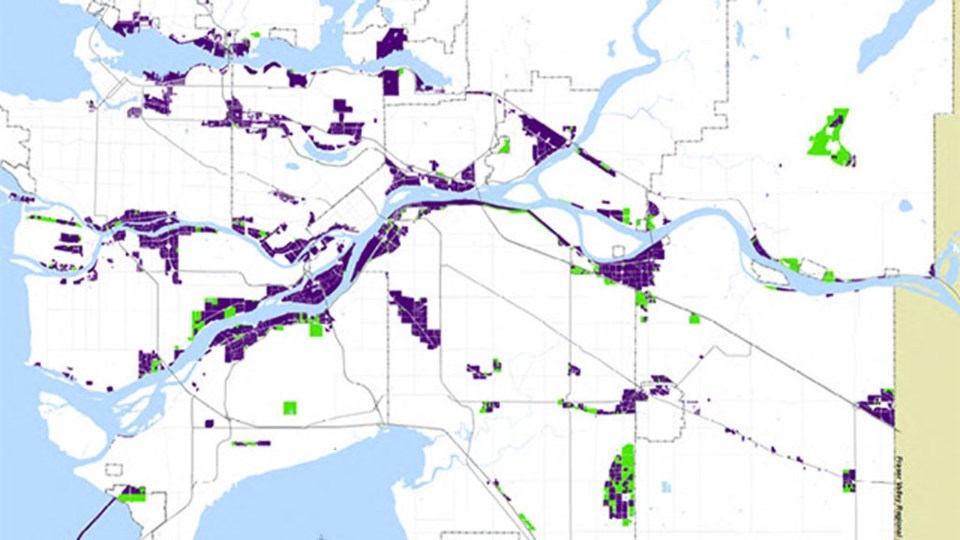While many developers are decrying the lack of land available for industrial projects and cities attempt to protect supply, new data from Metro Vancouver shows the region’s limited sites are increasingly being used for non-industrial purposes.
Officials at Metro Vancouver stated this “poses a considerable risk to the region’s economy.”
The new data comes from the Metro Vancouver 2020 Regional Industrial Lands Inventory which provides an updated, comprehensive summary of the quantity and quality of industrial and associated lands in the Metro Vancouver region.
The study comes on the heels of developers announcing several projects that utilize vertical space or complex project sites to maximize limited industrial land.
The inventory is done every five years. It provides information about the amount of land that is developed for industrial and other uses and identifies lands that are vacant by type of activity and other attributes.
According to the study the region had 11,502 hectares of land within the inventory, 82 per cent of which were “developed” and 18 per cent of which were classified as “other/vacant.”
Of the “other/vacant” lands in the Inventory, three per cent were used for “resource extraction,” two per cent for “residential,” one per cent for “agriculture,” and 11 per cent were undeveloped or fully vacant. These lands will serve as the future supply of industrial development.
The study added long-term policy to protect industrial lands varies, with 89 per cent of the inventory regionally designated as either industrial (67 per cent) or mixed employment (22 per cent). At the municipal level, 82 per cent were both zoned industrial and designated industrial.
Of the developed lands, most (85 to 95 per cent depending on the land use) were protected with both municipal industrial designation and industrial zoning. Roughly three per cent of the Inventory had municipal industrial zoning but not municipal industrial designation, thus are at greater risk for conversion into non-industrial use in the coming years.
The study pointed out large sites for trade-oriented logistics were particularly lacking.
“This has impacts on businesses locating in the region and being able to stay and grow in the region,” said the authors. “Although there was an increase in the total size of the inventory between 2015 and 2020, many of the lands added are not in locations well served by the transportation/goods movement network. Even with these additions, due to the rate of development activity, the amount of vacant industrial land continues to decline.”
Metro Vancouver stated the report will inform regional and municipal planning processes and policy work as well as inform infrastructure investments by agencies and private sector business decisions.
“Metro Vancouver will pursue opportunities to engage with stakeholders to advance industrial land matters across the region,” said officials. “This includes promoting the results of the 2020 Inventory to member jurisdictions, industrial developers and other agencies and stakeholders to encourage more intensive industrial development while encouraging the protection of the industrial use of the limited land supply.”
Russell Hixson is the staff writer for the Journal of Commerce where he covers the construction industry. Before that, he spent years in the U.S. as an investigative crime reporter. He lives in East Vancouver. Follow him on Twitter: @RussellReports.
SWIM ON:
- Russell Hixson last wrote about a major lumber donation intended to help rebuild Lytton.
- In May, Russell reported the industrial land crunch in Metro Vancouver was breaking new records.
- A report says the North is well-positioned to help BC recover from the pandemic – and as Dene Moore notes, it will do even better if several longstanding issues are addressed.



